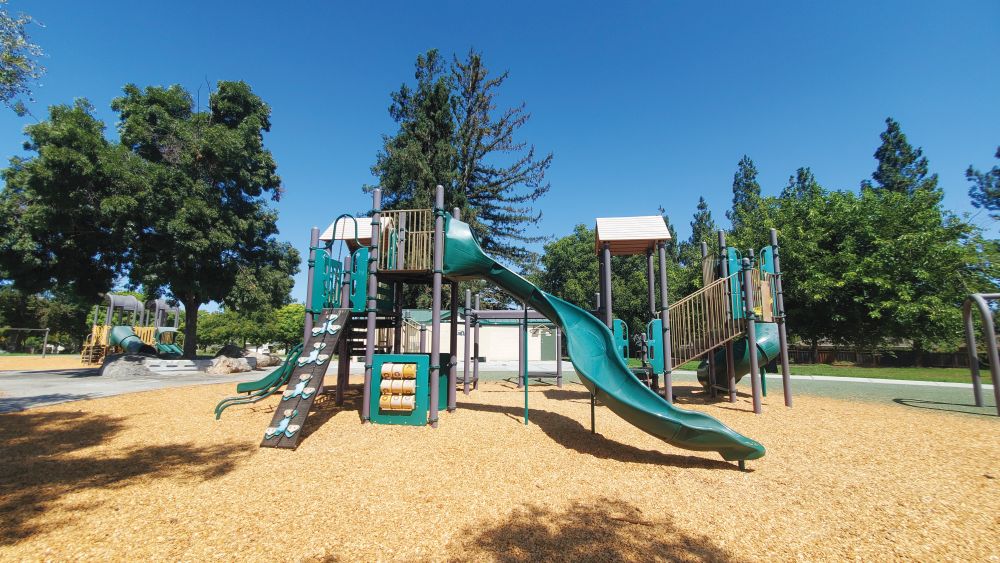Lone Hill Park in San Jose is empty when I arrive, but thanks to a fabulous old history book, I am hurled back 100 years.
From the SJSU Library I have plucked a ratty paperback from the eighth-floor shelves, a masterpiece of research for 1981 when it was first published. Like Modern Edens: Winegrowing in Santa Clara Valley and Santa Cruz Mountains 1798-1981 by Charles L. Sullivan is long out of print, but the university library owns two copies. I now carry one with me as I return to Lone Hill Park, where friends and I spent several teenage nights drinking vintages much more déclassé than those depicted in Sullivan’s book.
I grew up not far from Lone Hill Park, where indistinguishable tract-house suburbia extended for miles in every direction. Even today, one can’t go half a block without a repetitive pastiche of juniper bushes, two-car garage doors and unnecessary stucco renovations. The only thing missing is my beater Datsun blasting Slayer tunes duped onto unlabeled TDK cassettes.
Like Modern Edens was a pioneering work in the viticultural history of Santa Clara County. A century earlier, much of the valley was made up of vineyards. These days, all we hear from old-timers is orchard or cannery nostalgia. We never hear much about the vineyards that once dominated the landscape, especially in the late nineteenth century.
What’s now the Lone Hill neighborhood, for example, was formerly David M. Harwood’s Lone Hill Vineyard in the 1860s. Harwood was the county assessor and initially planted a 40-acre vineyard along what’s now the road named after him. After Harwood continued to add more and more acreage, he eventually commanded over the largest vineyard in the county at one point, at 115 acres. According to Like Modern Edens: “By 1871 he was producing over 20,000 gallons of wine per year from his grapes which included Folle Branche, Black Burgundy and Riesling.”
The entire district, Lone Hill and surroundings, then also called the Foothill District, went from Almaden Road westward all the way to Los Gatos and eventually started cranking out 75,000 gallons of wine per year, by the end of the 1870s. Hardly any of which actually left San Jose. Wineries either sold it by the barrel or half-barrel directly to outlying grocery shops. Otherwise customers showed up with their own containers. This was valley life at the time, especially those of French descent, of which many of these vintners were. The exporting of wine outside the area did not become a part of regular practice until the 1880s.
Like Modern Edens includes a glorious old illustration of what Lone Hill used to look like in the nineteenth century. A prominent mound of land rises from the surrounding vineyards. Harwood’s ranch house sits right next to the hill, “seven miles southwest of San Jose, Cal.”
Many years later, the Mirassou family took over the vineyard, which existed in various forms right up until the growth of suburbia, when developers converted the whole landscape into tract-house neighborhoods frequented by police cars with spotlights to search for unruly teenagers drinking Night Train in places like Lone Hill Park after they’d purchased the rotgut underage at the Punjabi liquor store near the Branham Safeway. If those teenagers only knew they were carrying on a centuries-old viticultural tradition, they could have at least given the cops a much more entertaining story. C’est la vie, as the French say.
Today the hill is not what it used to be. The neighborhood is technically called “Lone Hill Highlands” and the park sits up a slight incline near suburban street names like Mirassou and Vintner, recalling the glory days. In addition to the park, there’s a church and an elementary school that used to be called Lone Hill.
After a few more moments of stillness at Lone Hill Park, it remains empty, so I shuffle away and down the sidewalk. Regardless of how my words might sound, this trip is a happy experience. In those Night Train days, I was quite empty myself, but I am better now and grateful for old library books. Despite the depressing tract-house subdivisions in which I grew up, Eden or no Eden, I am content.




Thank you for sharing this information. I worked for the uninon school district for 11 years in the nineties and grew up down bloosom hill just a mile or so. I loved working at Lone Hill Elementary. Some of us live life never knowing who we left an impression on. I myself was one of the fortunate people that had a entire school that cared enough about me to acknowledge me when it was time for my next journey by having an assembly in my behalf. All of the children made me a gift and wrote me a letter saying how i touched their lives. You made me smile and remember a time as a child then growing up and seeing the changes just over a 30 year span. I had vineyards and perk pounds in my back yard. Thank you again for sharing.
Sincerely Erin Allen